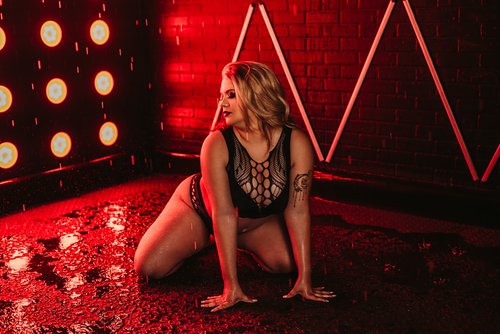Rain room photography has emerged as a groundbreaking trend in the world of photography. Unlike traditional shoots, which often rely on natural or controlled lighting and simple settings, rain room photoshoots add an element of unpredictability and dynamism. In a rain room, artificial rain is used to create a dramatic environment, allowing the photographer to capture subjects in ways not possible with conventional backdrops. The result is striking, surreal imagery that pushes the boundaries of creativity and storytelling.
Controlled Chaos: How Rain Room Differs from Traditional Shoots
The main difference between a rain room photoshoot and traditional photography lies in the atmosphere. While traditional photography typically uses soft lighting or carefully designed sets, rain room photography introduces a controlled chaos through cascading water. Photographers use high-tech sensors to ensure the rain doesn’t fall on the subject, but the surrounding space remains drenched. This creates a visual contrast—subjects are dry, while everything else around them appears drenched, making for a compelling, cinematic effect.
Immersive Experience: Engaging Both the Subject and the Viewer
Rain room photography isn’t just about capturing a visually stunning shot; it also creates an immersive experience. The rain and the sound of droplets falling create an intense sensory atmosphere that both the subject and the viewer can feel. This stands in contrast to traditional photography, where the experience is typically limited to the final image. In a rain room, photographers and subjects interact with the environment in real-time, adding an emotional layer to the photoshoot that is absent in more conventional styles.
Innovation in Lighting and Composition
In rain room photography, lighting plays a pivotal role in enhancing the surreal effect. Photographers often use dynamic lighting techniques to highlight the droplets and reflections, producing a glowing effect that contrasts beautifully with the subject. This is in contrast to traditional photography, where lighting typically focuses on illuminating the subject in a more straightforward manner. The light in a rain room is key to transforming the scene, amplifying the drama and enhancing the emotional impact of the shot.
Weathering the Storm: Rain Room as a Symbolic Setting
The symbolic value of a rain room photoshoot also makes it unique. Rain often symbolizes emotions like sadness, hope, or change, and the rain room provides a space where these themes can be explored visually. In traditional photography, settings like studios or outdoor locations don’t usually carry the same level of symbolism. The rain room allows for a deeper narrative exploration, where the mood of the scene can align with the personal story or theme the photographer wishes to convey, offering a distinctive edge over typical photo shoots.
Let's Rewind:
While rain room photography is still relatively new, it has captured the imagination of both photographers and audiences alike. Its unique ability to combine technology, artistry, and emotional storytelling makes it a promising trend in contemporary photography. As more photographers experiment with rain rooms, we’re likely to see even more innovative techniques and ideas that blend art with environment, setting this trend apart from traditional styles that rely on static environments and predictable lighting.





Comments